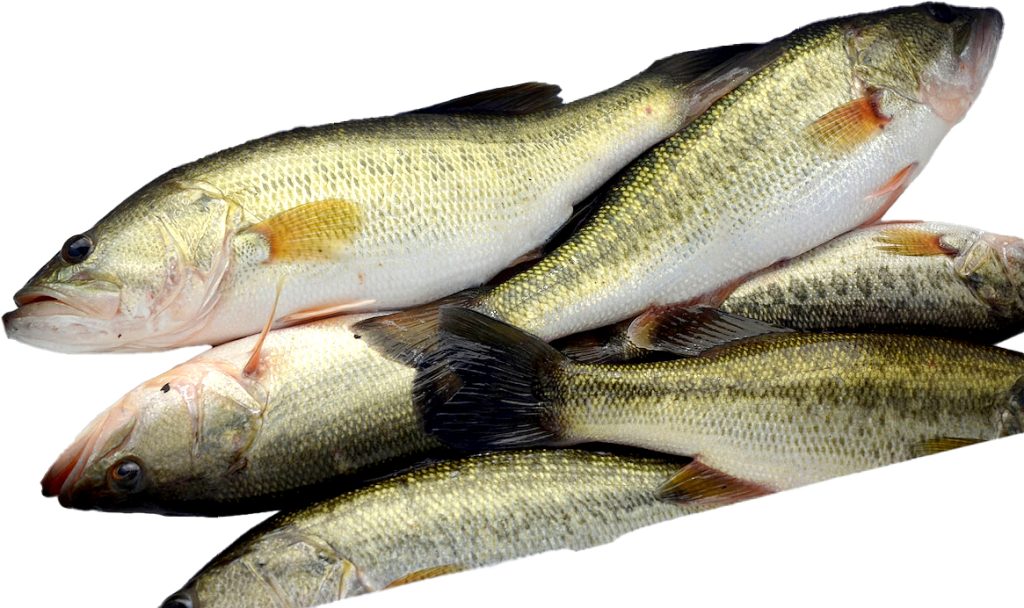Alabama has released its annual list of fish consumption advisories for 2024, warning the public to avoid eating fish caught in some Alabama waterways due to the presence of harmful substances like mercury or man-made chemicals.
The Alabama Department of Public Health issues the guidelines each year based on fish samples caught the previous fall.
If those samples show high levels of potentially harmful substances, such as PCBs and PFOS, the state will issue a consumption advisory in the spring for the location where the fish was caught.
“Unfortunately, certain toxic chemicals have been found in some lakes and rivers in Alabama,” the department said in this year’s advisories. “Some of these chemicals can accumulate in fish. With some of the chemicals, higher levels of the contaminants can be found in older and/or larger fish. When chemical concentrations are elevated in fish, they can pose health risks to people who eat them.”
This year’s advisories include 19 locations where the state recommends not eating any species of fish caught there. Those locations are:
- Baker’s Creek embayment at Wheeler Reservoir. (Morgan County) — Do not eat (PFOS)
- Bear Creek Reservoir, Dam forebay area. Bear Creek mile 75. (Franklin County) — Do not eat (mercury)
- Chickasaw Creek, entire creek (Mobile County) — Do not eat (mercury)
- Cold Creek Swamp, from confluence of Cold Creek with the Mobile River west through the swamp. (Mobile County) — Do not eat (mercury)
- Cowpen Creek, Upstream of confluence with Fish River. (Baldwin County) — Do not eat (mercury)
- Mobile River, at Cold Creek, at river mile 27.0. (Mobile County) — Do not eat (mercury)
- Polecat Creek, upstream of confluence with Fish River. (Baldwin County) — Do not eat (mercury)
- Binion Creek, immediately upstream of Hwy 43. (Tuscaloosa County) — Do not eat (mercury)
- Lewis Smith Reservoir, at the mouth of Clear Creek, Sipsey Fork in the vicinity of Clear Creek and Butler Creeks. Approximately 2.3 miles upstream of State Route 257 bridge. (Winston County) — Do not eat (mercury)
- Choccolocco Creek, entire length of creek from south of Oxford to Logan Martin Reservoir. (Calhoun, Talladega Counties) — Do not eat (PCBs)
- Choccolocco Creek, in the vicinity of County Road 399 bridge. (Talladega County) — Do not eat (PCBs, mercury)
- Choccolocco Creek embayment, approximately 1.0 mile upstream of lake confluence. (Talladega County) — Do not eat (PCBs)
- Little Escambia Creek, at Wolf Log Road. (Escambia County) — Do not eat (mercury)
- Murder Creek, between the confluence with Burnt Corn Creek and Conecuh River (Escambia County) — Do not eat (mercury)
- Pea River, approximately 0.5 miles downstream of Beaverdam Creek/Pea River confluence, south of Elba, AL. (Coffee County) — Do not eat (mercury)
- Perdido River, in vicinity of US Hwy 90 bridge crossing. (Baldwin County) — Do not eat (mercury)
- Persimmon Creek, at AL Hwy 106 west of Georgiana. (Butler County) — Do not eat (mercury)
- Sepulga River in the vicinity of Brooklyn, AL. (Escambia County) — Do not eat (mercury)
- Yellow River, at County Road 4 bridge. (Covington County) — Do not eat (mercury)
Last year’s advisories contained 16 locations where the public was cautioned against eating any species of fish.
The full list of 2024 fish consumption advisories can be found here, sorted by region of the state. ADPH also created a map showing the locations of the advisories.
Some advisories warn that people should not eat any fish at all or limit their consumption of certain species to one or more meals in a given time period. ADPH considers one 8 oz. portion of fish to be a meal.
In general, ADPH says that larger, older fish tend to have higher levels of contaminants because the fish build up levels of harmful substances over time.
ADPH says that a fish consumption advisory does not mean that a body of water is unsafe for swimming or other activities.
“Fish bioaccumulate contaminants in their tissues to concentrations that are sometimes hundreds to thousands of times greater than the concentration of the contaminant in the waters they inhabit,” the Department said in its advisories. “Activities such as swimming, boating, or catch-and-release fishing in waters that have fish consumption advisories are considered to be safe.”
What are the risks?
The advisories are meant to help people avoid eating too much mercury, PCBs or PFOS with their fish.
Mercury is a natural substance that can be found in greater concentrations due to human activity, particularly from burning coal or other fossil fuels that release mercury into the air. Modern coal-fired power plants are required to use technology to reduce mercury emissions.
Mercury is a neurotoxin and can have negative effects on unborn children, impacting development and cognition. In adults, exposure to mercury can cause kidney damage, nervous system damage or heart disease, though that is less common.
PCBs and PFOS are man-made chemicals that can be found in high levels in waterways because both chemicals are extremely long-lasting and do not easily break down in a natural setting.
The U.S. Environmental Protection Agency says PCBs “have been shown to cause cancer in animals as well as a number of serious non-cancer health effects in animals, including: effects on the immune system, reproductive system, nervous system, endocrine system and other health effects.” “Studies in humans support evidence for potential carcinogenic and non-carcinogenic effects of PCBs,” according to the EPA.
PCBs tend to build up in the fatty tissues of fish and other animals. Cleaning fish properly can reduce the risk by removing fat and skin that have high levels of PCBs.
PFOS is one type of PFAS chemical, which was widely used in commercial products from waterproof clothing to cookware and fire-fighting foams. Research is still trying to quantify the risks associated with long-term exposure to these chemicals, but they have been linked to health conditions including certain types of cancer that prompted health warnings and new regulations from the U.S. Environmental Protection Agency.
According to ADPH, children under 14 and women who are pregnant, nursing or plan to become pregnant are at higher risk of negative effects from these contaminants.
These at-risk groups are recommended to follow the health advisory recommendations, as well as completely avoiding species of fish such as king mackerel, shark, swordfish, or tilefish, which are known to accumulate higher levels of chemicals.
How it works
The ADPH compiles the fish consumption advisories based on samples taken by the Alabama Department of Environmental Management the previous year. Each fall, ADEM attempts to catch common fish species in 34 different bodies of water across the state, sometimes from multiple locations on the same river.
ADEM crews use electro-fishing techniques and sometimes a rod and reel to collect fish for analysis.

Those fish samples are sent off to a lab to test for three common contaminants — mercury, PCBs and PFOS.
ADPH then issues advisories the following spring, if a fish caught at that location the previous fall showed potentially harmful levels in their tissue.
ADPH says that the absence of an advisory does not necessarily mean that a fish is safe to eat, but that the guide is meant to be used as a guideline to warn people of potential risks.
“This advisory booklet was developed to inform people who eat Alabama fish as to which species of fish in which waterbodies may present an elevated health hazard,” ADPH said.










